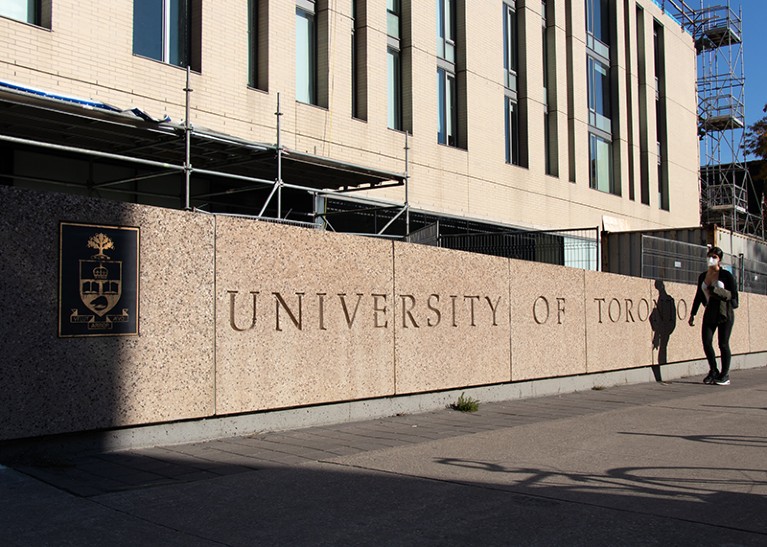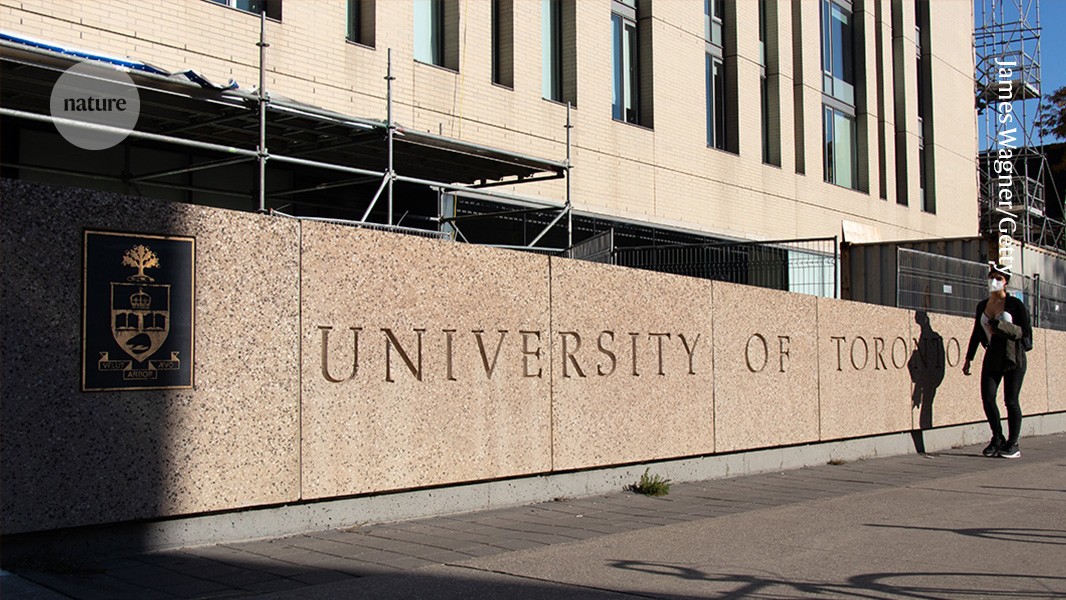
The University of Toronto in Canada raised its graduate-student stipends last November.Credit: James Wagner/Getty
Stipends for biology and physics graduate students at Canadian universities fall well short of a living wage, an analysis reports.
“All of the minimum stipends we found were below the poverty line after tuition, except for the physics department at the University of Toronto,” says Thomas Bailey, a PhD student at the University of Ottawa and an author of the work, which was posted on the bioRxiv preprint server last November and has not yet undergone peer review1. “People who want to study science in Canada have three options: hope for more support from their supervisor, take on big debts or emigrate.”
Bailey and his colleagues collected information on the minimum graduate-student stipends, tuition costs and other fees in physics and biology departments across the country. After comparing the stipend — minus tuition and other fees — with the local cost of living, they found that the average minimum stipend for domestic students is around Can$9,500 (US$11,900) below the poverty line, whereas international students fare even worse, falling about Can$16,900 short.
Canadian stipends also lag behind those in other similar countries — the highest Canadian minimum stipend is roughly equivalent to the lowest biology stipend in the United States, and lower than the stipend in the United Kingdom. The authors estimate that Canadian stipends would need to increase by 1.5 times merely to keep pace with the cost of living. (By way of comparison, according to the ‘Big Mac Index’, a whimsical metric of purchasing power, the price of a McDonald’s Big Mac sandwich differs by only about 3% in those three countries.)
Most university departments set a minimum stipend for graduate students, with the money coming from a mix of the supervisor’s grants, departmental funds and salary for teaching assistant posts. Tuition and other fees are deducted from the stipend — on average 34% of the stipend is returned to the university for a local student. (By contrast, tuition is typically waived for graduate students in the United States and United Kingdom.) Students who receive scholarships or other external funding generally have their stipend reduced, although the exact arrangements vary.
Familiar story
Hilary Hennessey, campaigns commissioner for the Canadian Federation of Students’ National Graduate Caucus and a graduate student at Memorial University in Newfoundland, says that the study reflects the federation’s own survey data. More than 70% of graduate students in Canada are living below the poverty line, Hennessey’s survey found, and one-quarter are worried about whether they will have enough money to complete their studies. “High tuition and the cost of living are putting graduate studies out of reach for many,” she says.
Similarly, a 2021–22 survey of graduate students by the Ottawa Science Policy Network found that roughly 43% of 1,305 respondents reported that they frequently struggled to make ends meet or that their tight finances forced them to make sacrifices to afford necessities, and less than 10% were comfortable with their financial situation2.
Universities have not been blind to this growing problem, says Ian Wereley, executive director of the Canadian Association for Graduate Studies in Ottawa. “Over the past decade, universities and faculties of graduate studies have realized they need to be more aware of the non-academic struggles of our students,” he says.
The rising costs of rent and food have led to a huge increase in the number of students using food banks and living in their cars, highlighting the significant need for assistance, he says. The problem is that universities face challenges of their own, with freezes on tuition fees and operating grants, and caps on admissions of international students, whose higher tuition fees have subsidized university operations for years.
“While universities recognize the need and want to take action, they are also faced with restrictions on resources,” says Wereley.


